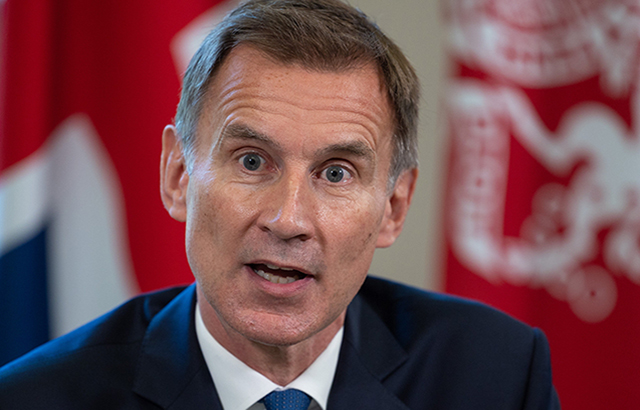Speculation around budgets and statements is always rife in the run up to the chancellor’s speech in the House of Commons, but while some of the decisions usually get leaked to the press, this time around prime minister Rishi Sunak and Chancellor of the Exchequer Jeremy Hunt have been fairly transparent from the get-go on what they intend to do.
They both revealed that taxes will rise for virtually everybody in some way, shape or form, partly to cope with a record-high inflationary environment, cost of living and energy crises and the war in Ukraine; and partly to mend the damages caused by former chancellor Kwasi Kwarteng’s ‘mini-budget’ at the end of September 2022, which sent markets on a frenzy.
According to industry commentators, the number of measures to be announced on 17 November could be many and ever-encompassing, from changes to the capital gains tax (CGT) regime, pension tax relief, triple lock, inheritance tax (IHT), money purchase annual allowance (MPAA) and lifetime allowance (LTA).
These would come in tandem with the measures implemented by then-chancellor Rishi Sunak in his March 2021 budget, where he froze several personal allowances until at least 2025-26.
Pensions triple lock
One of the biggest decisions consumers are waiting on, is whether the government will stick to its 2019 manifesto pledge and keep the triple lock for state pension – where increases are either in line with inflation, average earnings or 2.5%, whichever is highest.
This follows last year’s decision to temporarily move away from the three-pronged system to a ‘double lock’ caused by a pandemic-induced anomaly on earnings figures.
Shaun Moore, chartered financial planner at Quilter, said: “Sunak and Hunt will no doubt be weighing up whether they honour the manifesto promise of keeping the triple lock in place or opt to increase the state pension by a different measure in the face of a very difficult and uncertain economic outlook.
“While it will be expensive to keep in place for April 2023 given it is set by the September 2022 inflation figure of 10.1%, it may prove just too politically damaging to scrap it. However, looking further ahead the Bank of England has predicted inflation may drop to 7.9% by Q3 next year, so keeping the triple lock in place may prove less expensive from 2024.
“Pensioners across the country will be eagerly awaiting the budget with hope that the previous commitment to the triple lock will be honoured, particularly given the low increase of 3.1% they received in April 2022 when inflation was already around 9%.
“The triple lock is proving to be a political hot potato for the government, and Sunak will need to make a final decision either way by the autumn statement deadline to help pensioners plan for their finances, particularly at a time when inflation continues to soar, and finances are so front of mind.
“Regardless of the outcome, the triple lock does not work for everyone, and perhaps it may be time to assess whether there is a fairer way to raise the state pension while preventing more people slipping into the poverty net and having to choose between heating or eating.”
Pension tax relief and MPAA
Cuts to pension tax relief could be on the table as ministers are rumoured to be discussing slashing the rate at which income tax relief is applied to higher-rate taxpayers by half – from 40% to 20%, Moore said.
“Should the government make this move, reports suggest an additional £8bn to £10bn ($11.7bn, €11.4bn) could be raised each year which could go a long way towards filling the government’s public finances gap. However, it is unlikely they would benefit from it immediately given they would have to consult, its implementation would take time and furthermore it would prove highly unpopular with the core Tory vote and their own backbench MPs.”
The MPAA is another area of pension reform which both industry and consumers have been waiting on for years now, especially considering the current cost of living crisis and the surge in the number of people tapping into their pensions to make ends meet.
Moore added: “Changing the rules around MPAA could represent an opportunity for the government to offer a carrot to the general public considering it is likely to be using a fair bit of stick elsewhere.
“There has been a 23% uptick in the number of people accessing their pensions amid the cost of living crisis. However, those who are must be aware that if you take income flexibly under the current rules then this could limit your ability to save again in the future. The MPAA will cap future money purchase contributions at just £4,000 per year, rather than the normal £40,000.
“There is a risk of a scarring effect on people’s savings, caused by them being forced to tap into their retirement pot early, but then also being prevented from recovering that funding gap when their finances are in better shape. We believe the chancellor should relax the MPAA triggers for at least the current tax year in order to avoid this double-whammy for people forced to use pension cash in the crisis.”
LTA
Last on the pension front, is the potential for the lifetime allowance (LTA) threshold to remain frozen for an additional two years.
Calculations by advice firm LCP recently showed that the current inflation levels are set to double the tax intake from the frozen limit for the Treasury to around £2bn by 2025-26.
Quilter’s Moore said: “The allowance has been kicked around like a football since its introduction back in 2006, and many are expecting an additional two years to now be added to the freeze.
“The LTA was originally set at £1.5m as part of a plan to simplify pensions and replace a complex legacy of eight different tax regimes. From there it was allowed to climb with inflation to reach £1.8m in 2011/12, before being lowered back down to £1.5m for 2012/13.
“In 2015, it was announced that the LTA would be cut from £1.25m to £1m from 2016/17 and tied to CPI from April 2018/19. As it currently stands, the allowance has been de-linked with inflation and is frozen at £1,073,100 until 2026.
“Our analysis, based on previous Treasury forecasts, shows a two-year extension would see pensioners hand over at least an extra £400m in tax, on top of the £990m forecasted to be raised by the five-year freeze announced in March 2021.
“Some will argue that freezing the LTA by an additional two years is justified because pensioners haven’t been as adversely affected financially in the past couple of years in comparison to those of working age, and so they must pay their fair share of the costs. However, what this view fails to appreciate is that the lifetime allowance is a test on entry into being a pensioner.
“Someone who became a pensioner before the onset of the pandemic and the cost of living crisis seen in the past couple of years isn’t going to face a lower LTA if their pension is already 100% crystalised and they are withdrawing an income. Freezing the LTA will mostly impact people in the workforce today who are forced into retirement because they lose their job.”
CGT
Reforms around capital gains tax (CGT) have been speculated on for years now, more recently fuelled by Rishi Sunak commissioning a review of the system in 2020.
But could this be the year it actually happens? And if so, what could the potential changes look like?
Alice Guy, personal finance expert at Interactive Investor, said: “Raising CGT to 40% rather than a current headline rate of 28% would mean that a taxpayer who bought a second property for £200,000 and sold it for £300,000 would pay an extra £12,000 tax. That’s a particularly gloomy scenario, and one which we hope does not play out. But it does highlight the scope for unintended consequences.
“The proposed hike, combined with a freeze of the annual allowance and spiralling inflation, means that a tax originally intended for the very rich will hit more ordinary taxpayers in the future.
“Increasing CGT runs the risk of a potential mass exodus of buy-to-let landlords. There is real danger of a rental crisis, as rumours of capital gains tax hikes, coupled with rising interest rates could encourage more buy-to-let landlords to sell up. Fewer rental properties available would make it harder for renters to find an affordable home for their families.”
But Quilter’s Moore believes tinkering with CGT may prove a politically popular move as it is only being paid by a minority of the general population – 323,000 in 2020-21 – but its popularity will depend on what decisions are actually made by Hunt.
“For example, removing primary residence relief could be a step too far, although would raise a lot, so it is unlikely they will go for that.
“Two potential options are: reducing the CGT exempt amount (currently £12,300); or aligning CGT rates to income tax. Of the two options, aligning the bands is most lucrative for the Treasury. If rates were increased, they would go from 10% to 20% for basic rate taxpayers and 20% to 40% or even 45% for higher and additional rate taxpayers.
“There is a property surcharge currently (8%) which may or may not be retained if rates are aligned although one imagines the surcharge might go if the rates increase across the board. The alignment of rates would mean they at least double for all tax bands.”
IHT
Anytime a budget or a statement is announced, inheritance tax (IHT) always makes it to the top of the list of potential changes, yet the system has hardly been touched in recent years.
Myron Jobson, senior personal finance analyst at Interactive Investor, said that the IHT threshold has been left unchanged at £325,000 since 2009 and that, today, it has been reduced by “£140,000 in real terms” due to not keeping it in line with inflation over the years.
“IHT is no longer a tax on the wealthy as meteoric house price growth and strong stock market performance over the past few decades has dragged an increasing number of estates into the IHT net.
“Fiscal drag means the IHT threshold has reduced by £140,000 in real terms. The residence nil rate band, introduced in April 2017, offsets some of the impact of fiscal drag but it only benefits homeowners with children or grandchildren. This additional IHT allowance of £175,000 can be claimed where the family home is inherited by children or grandchildren.”
But Quilter’s Moore said that, if Sunak and Hunt decide to freeze the IHT threshold for an additional two years, this could net the Treasury an additional £1bn.
“While house prices may soon cool due to the never-ending list of financial concerns facing the UK such as inflation, energy prices and an unpredictable European war, this is unlikely to take the sting out of IHT bills for some time.
“Extending the frozen thresholds for an additional two years is an inheritance tax raid by stealth. It is also worth remembering that the gifting allowances have also not increased with inflation, so it reduces people’s options for mitigating IHT too.
“If the government does choose to freeze IHT thresholds they should at least increase the gifting allowances, particularly in light of the cost of living crisis as this could help the flow of intergenerational wealth and take the sting out of the financial hardship many will be facing.”








